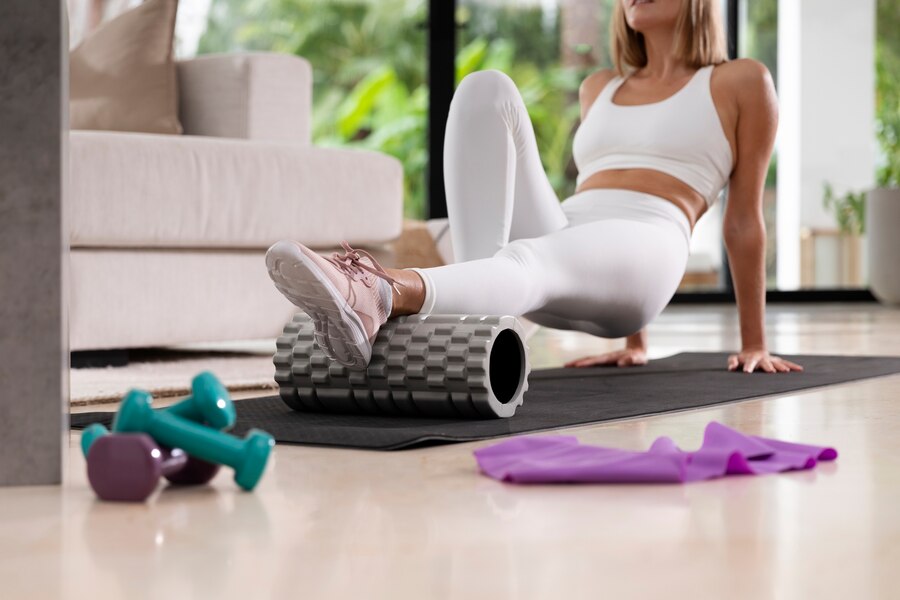
In recent years, foam rolling has emerged as a popular self-myofascial release technique among fitness enthusiasts, athletes, and physical therapists. This simple yet effective tool has gained widespread recognition for its ability to alleviate muscle tightness, improve flexibility, and enhance overall athletic performance. In this comprehensive guide, we will delve into the science behind foam roller, its benefits, proper techniques, and practical applications in various aspects of fitness and rehabilitation.
Understanding Foam Rolling
Foam rolling, also known as self-myofascial release, involves using a cylindrical foam roller to apply pressure to specific areas of the body, targeting muscle and connective tissue (fascia). The primary goal is to release tension, increase blood flow, and restore optimal muscle function. Foam rollers come in various sizes, densities, and textures, catering to different preferences and needs.
The Science Behind Foam Rolling
The efficacy of foam roller lies in its ability to stimulate the nervous system and initiate a relaxation response in the muscles. When pressure is applied to a muscle via foam rolling, it activates the Golgi tendon organs and mechanoreceptors, leading to a decrease in muscle spindle activity and a subsequent reduction in muscle tension. Additionally, foam roller promotes blood circulation, which helps deliver oxygen and nutrients to the muscles while removing metabolic waste products.
Benefits of Foam Rolling
Improved Flexibility and Range of Motion: foam roller helps break up adhesions and scar tissue, allowing muscles to move more freely and efficiently. Regular foam rolling can lead to increased joint flexibility and a broader range of motion, which is crucial for preventing injuries and enhancing athletic performance.
Alleviation of Muscle Soreness: Engaging in intense physical activities often leads to muscle soreness and stiffness due to the accumulation of lactic acid and other metabolic byproducts. Foam rolling post-exercise can expedite the recovery process by reducing muscle soreness and enhancing muscle repair.
Enhanced Athletic Performance: Incorporating foam rolling into pre-workout routines can improve muscle readiness and performance. By priming the muscles and enhancing blood flow, foam rolling prepares the body for exercise, allowing individuals to perform at their peak and reduce the risk of injuries.
Injury Prevention: Tight muscles and restricted fascia are common precursors to injuries such as strains, sprains, and overuse injuries. Foam rolling helps identify and address areas of muscular imbalance or tightness, thereby reducing the likelihood of injury during physical activity.
Stress Relief and Relaxation: Beyond its physical benefits, foam rolling can also promote relaxation and stress relief. The rhythmic motions of foam rolling, coupled with deep breathing, can induce a parasympathetic response in the body, promoting relaxation and reducing stress levels.
Proper Foam Rolling Techniques
While foam rolling is relatively simple, proper technique is essential to maximize its benefits and minimize the risk of injury. Here are some guidelines for effective foam rolling:
Start Gradually: If you’re new to foam rolling, begin with gentle pressure and gradually increase intensity as your muscles adapt.
Target Specific Muscle Groups: Focus on areas of tightness or discomfort, rolling slowly and deliberately over the muscle fibers. Common target areas include the calves, quadriceps, hamstrings, IT band, glutes, and upper back.
Maintain Proper Form: Keep your core engaged and maintain a neutral spine throughout the rolling motion. Avoid rolling directly over joints or bony prominences.
Apply Sustained Pressure: When you encounter a tender spot or trigger point, pause and apply sustained pressure for 20-30 seconds until you feel the tension release.
Breathe Deeply: Practice deep diaphragmatic breathing while foam rolling to promote relaxation and enhance the effectiveness of the technique.
Stay Hydrated: Drinking an adequate amount of water before and after foam rolling can help facilitate the removal of toxins and metabolic waste products from the muscles.
Practical Applications of Foam Rolling
Foam rolling can be incorporated into various aspects of fitness, rehabilitation, and wellness. Here are some practical applications:
Pre-Workout Warm-Up: Spend 5-10 minutes foam rolling major muscle groups before exercise to improve circulation, enhance muscle elasticity, and prepare the body for physical activity.
Post-Workout Recovery: Incorporate foam rolling into your post-workout routine to alleviate muscle soreness, promote relaxation, and expedite the recovery process.
Injury Rehabilitation: Foam rolling can complement traditional rehabilitation exercises by addressing muscular imbalances, restoring mobility, and promoting tissue healing.
Daily Maintenance: Make foam rolling a part of your daily routine to prevent muscular tightness, improve flexibility, and maintain optimal musculoskeletal health.
Desk-Based Relief: Individuals who spend long hours sitting at a desk can benefit from periodic foam rolling sessions to counteract the effects of prolonged sitting and alleviate tension in the hips, lower back, and shoulders.
Conclusion
Foam rolling is a simple yet powerful tool for enhancing mobility, reducing muscle soreness, and promoting overall well-being. By incorporating foam rolling into your fitness regimen and daily routine, you can unlock a myriad of benefits that contribute to improved athletic performance, injury prevention, and enhanced quality of life. Remember to prioritize proper technique, consistency, and listening to your body’s feedback to reap the full rewards of foam rolling. Start rolling today and experience the transformative effects firsthand.








